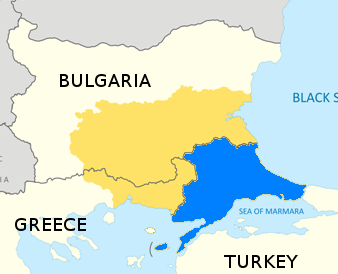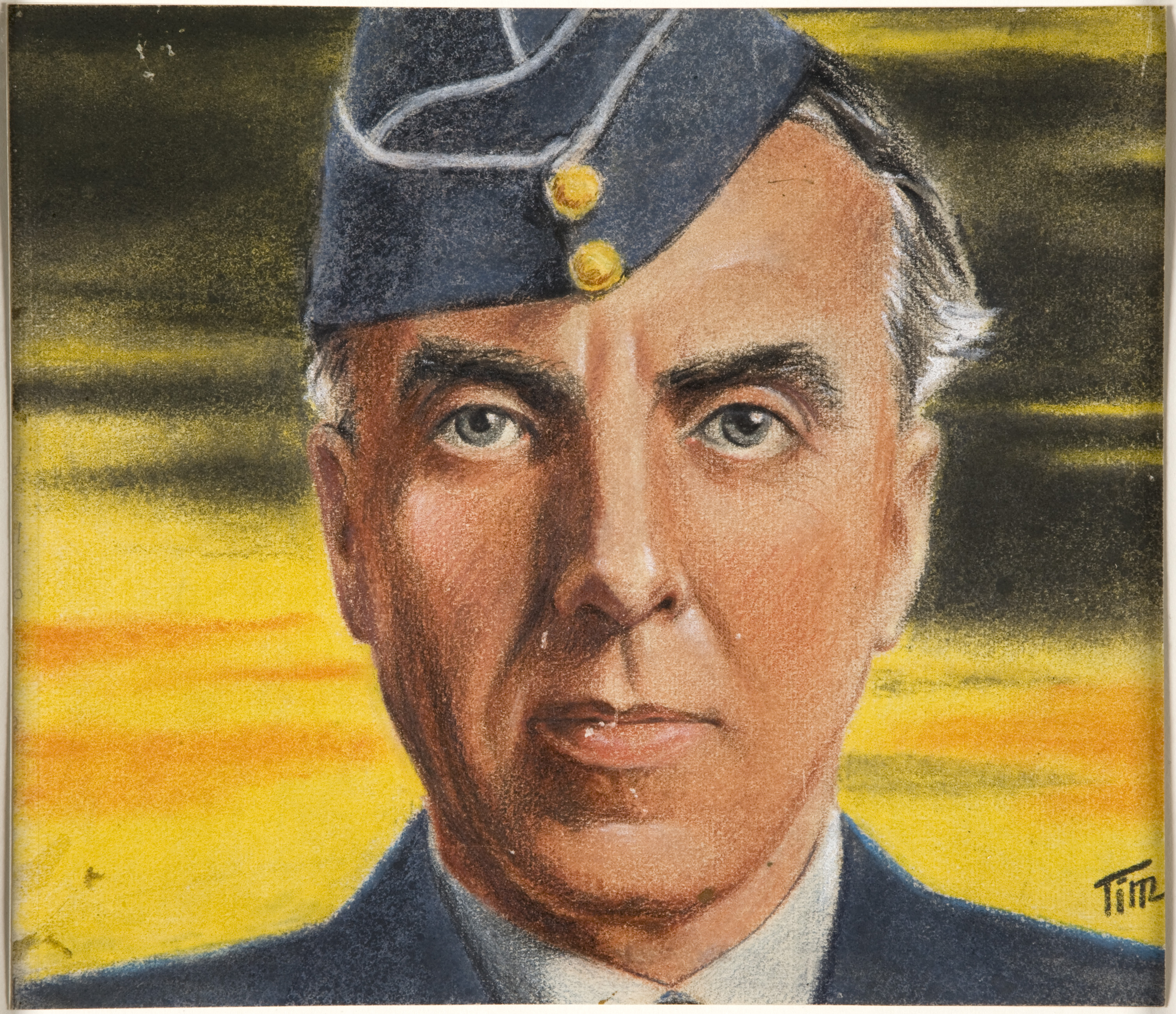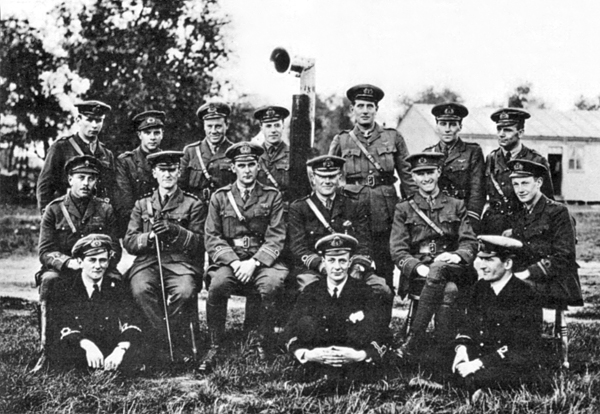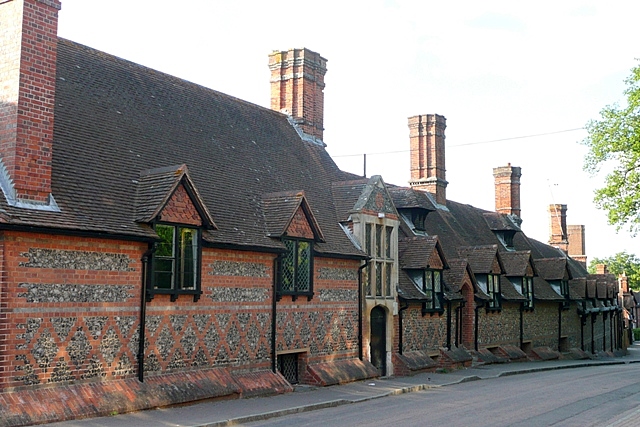|
Richard Bell Davies
Vice Admiral Richard Bell Davies (19 May 1886 – 26 February 1966), also known as Richard Bell-Davies, was a senior Royal Navy commander, naval aviator, and a First World War recipient of the Victoria Cross, the highest award for gallantry in the face of the enemy that can be awarded to British and Commonwealth forces. Early life and career Born in Kensington, London, Davies was orphaned by the age of five and was brought up by an uncle, a doctor. He attended Bradfield College in Berkshire between September 1899 and April 1901. Davies enlisted in the Royal Navy in 1901 joining , and on 15 September 1902 was posted as a naval cadet to the protected cruiser HMS ''Diana'', serving with the Mediterranean Fleet. In 1910 he took private flying lessons, and in 1913 he was accepted into the Royal Naval Air Service (RNAS) and was appointed a squadron commander. First World War Distinguished Service Order In the early days of the war, Davies and Richard Peirse carried out a number o ... [...More Info...] [...Related Items...] OR: [Wikipedia] [Google] [Baidu] |
Kensington
Kensington is an area of London in the Royal Borough of Kensington and Chelsea, around west of Central London. The district's commercial heart is Kensington High Street, running on an east–west axis. The north-east is taken up by Kensington Gardens, containing the Albert Memorial, the Serpentine Gallery and John Hanning Speke, Speke's monument. South Kensington and Gloucester Road, London, Gloucester Road are home to Imperial College London, the Royal College of Music, the Royal Albert Hall, Natural History Museum, London, Natural History Museum, Victoria and Albert Museum, and Science Museum, London, Science Museum. The area is also home to many embassies and consulates. Name The Manorialism, manor of ''Chenesitone'' is listed in the Domesday Book of 1086, which in the Old English language, Anglo-Saxon language means "Chenesi's List of generic forms in place names in Ireland and the United Kingdom, ton" (homestead/settlement). One early spelling is ''Kesyngton'', as wri ... [...More Info...] [...Related Items...] OR: [Wikipedia] [Google] [Baidu] |
Croix De Guerre 1914–1918 (France)
The '' 1914–1918'' () was a French military decoration, the first version of the . It was created to recognize French and allied soldiers who were cited for valorous service during World War I, similar to the British '' mentioned in dispatches'' but with multiple degrees equivalent to other nations' decorations for courage. Soon after the outbreak of World War I, French military officials felt that a new military award had to be created. At that time, the ''Citation du jour'' ("Daily Citation") already existed to acknowledge soldiers, but it was just a sheet of paper. Only the Médaille Militaire and Legion of Honour were bestowed for courage in the field, due to the numbers now involved, a new decoration was required in earnest. At the end of 1914, General Boëlle, Commandant in Chief of the French 4th Army Corps, tried to convince the French administration to create a formal military award. Maurice Barrès, the noted writer and parliamentarian for Paris, gave Boëlle sup ... [...More Info...] [...Related Items...] OR: [Wikipedia] [Google] [Baidu] |
East Thrace
East Thrace or Eastern Thrace, also known as Turkish Thrace or European Turkey, is the part of Turkey that is geographically in Southeast Europe. Turkish Thrace accounts for 3.03% of Turkey's land area and 15% of its population. The largest city is Istanbul, which straddles the Bosporus between Europe and Asia. East Thrace is of historic importance as it is next to a major sea trade corridor and constitutes what remains of the once-vast Ottoman region of Rumelia. It is currently also of specific geostrategic importance because the sea corridor, which includes two narrow straits, provides access to the Mediterranean Sea from the Black Sea for the navies of five countries: Russia, Ukraine, Romania, Bulgaria, and Georgia (country), Georgia. The region also serves as a future connector of existing Turkish, Bulgarian, and Greek high-speed rail networks. Due to the guest worker agreement with Turkey and Germany, some Turks in Germany originally come from Eastern Thrace, mostly fr ... [...More Info...] [...Related Items...] OR: [Wikipedia] [Google] [Baidu] |
Bulgaria
Bulgaria, officially the Republic of Bulgaria, is a country in Southeast Europe. It is situated on the eastern portion of the Balkans directly south of the Danube river and west of the Black Sea. Bulgaria is bordered by Greece and Turkey to the south, Serbia and North Macedonia to the west, and Romania to the north. It covers a territory of and is the tenth largest within the European Union and the List of European countries by area, sixteenth-largest country in Europe by area. Sofia is the nation's capital and List of cities and towns in Bulgaria, largest city; other major cities include Burgas, Plovdiv, and Varna, Bulgaria, Varna. One of the earliest societies in the lands of modern-day Bulgaria was the Karanovo culture (6,500 BC). In the 6th to 3rd century BC, the region was a battleground for ancient Thracians, Persians, Celts and Ancient Macedonians, Macedonians; stability came when the Roman Empire conquered the region in AD 45. After the Roman state splintered, trib ... [...More Info...] [...Related Items...] OR: [Wikipedia] [Google] [Baidu] |
Zeebrugge
Zeebrugge (; from , meaning "Bruges-on-Sea"; , ) is a village on the coast of Belgium and a subdivision of Bruges, for which it is the modern port. Zeebrugge serves as both the international port of Bruges-Zeebrugge and a seafront resort with hotels, cafés, a marina and a beach. Location Zeebrugge is located on the coast of the North Sea. Its central location on the Belgian coast, short distance to Great Britain and close vicinity to densely populated industrialised cities make it a crossroads for traffic from all directions. An expressway to Bruges connects Zeebrugge to the European motorway system; one can also get to and from Zeebrugge by train or tram. A 12 km canal links the port to the centre of Bruges. It is Belgium's most important fishing port and the wholesale fish market located there is one of the largest in Europe. Aside from being a passenger terminal with ferries to the United Kingdom, the harbour serves as the central port for Europe's automotive ind ... [...More Info...] [...Related Items...] OR: [Wikipedia] [Google] [Baidu] |
Ostend
Ostend ( ; ; ; ) is a coastal city and municipality in the province of West Flanders in the Flemish Region of Belgium. It comprises the boroughs of Mariakerke, Raversijde, Stene and Zandvoorde, and the city of Ostend proper – the largest on the Belgian coast. History Middle Ages In the Early Middle Ages, Ostend was a small village built on the east-end () of an island (originally called Testerep) between the North Sea and a beach lake. Although small, the village rose to the status of "town" around 1265, when the inhabitants were allowed to hold a market and to build a market hall. The major source of income for the inhabitants was fishing. The North Sea coastline has always been rather unstable due to the power of the water. In 1395 the inhabitants decided to build a new Ostend behind large dikes and further away from the always-threatening sea. 15th–18th centuries The strategic position on the North Sea coast had major advantages for Ostend as a harbour ... [...More Info...] [...Related Items...] OR: [Wikipedia] [Google] [Baidu] |
Richard Peirse
Air Chief Marshal Sir Richard Edmund Charles Peirse, (30 September 1892 – 5 August 1970), served as a senior Royal Air Force commander. RAF career The son of Admiral Sir Richard Peirse and his wife Blanche Melville Wemyss-Whittaker, Richard Peirse was educated at the Junior School section of Monkton Combe School, Bath, Somerset, on and at King's College London. He became a midshipman in the Royal Navy Volunteer Reserve and was commissioned in 1912.Air of Authority – A History of RAF Organisation – Air Chief Marshal Sir Richard Peirse He was awarded the for his contribution ... [...More Info...] [...Related Items...] OR: [Wikipedia] [Google] [Baidu] |
Royal Naval Air Service
The Royal Naval Air Service (RNAS) was the air arm of the Royal Navy, under the direction of the Admiralty (United Kingdom), Admiralty's Air Department, and existed formally from 1 July 1914 to 1 April 1918, when it was merged with the British Army's Royal Flying Corps to form the Royal Air Force (RAF), the world's first independent air force. It was replaced by the Fleet Air Arm, initially consisting of those RAF units that normally operated from ships, but emerging as a separate unit similar to the original RNAS by the time of the Second World War. History Background On 21 July 1908 Captain Reginald Bacon, who was a member of the Aerial Navigation Sub-Committee, submitted to the First Sea Lord John Fisher, 1st Baron Fisher, Sir John Fisher that a rigid airship based on the Imperial Germany, German Zeppelin be designed and constructed by the firm of Vickers. After much discussion on the Committee of Imperial Defence the suggestion was approved on 7 May 1909. Though Bacon ... [...More Info...] [...Related Items...] OR: [Wikipedia] [Google] [Baidu] |
Mediterranean Fleet
The British Mediterranean Fleet, also known as the Mediterranean Station, was a formation of the Royal Navy. The Fleet was one of the most prestigious commands in the navy for the majority of its history, defending the vital sea link between the United Kingdom and the majority of the British Empire in the Eastern Hemisphere. The first Commander-in-Chief for the Mediterranean Fleet was the appointment of General at Sea Robert Blake in September 1654 (styled as Commander of the Mediterranean Fleet). The Fleet was in existence until 1967. Pre-Second World War The Royal Navy gained a foothold in the Mediterranean Sea when Gibraltar was captured by the British in 1704 during the War of Spanish Succession, and formally allocated to Britain in the 1713 Treaty of Utrecht. Though the British had maintained a naval presence in the Mediterranean before, the capture of Gibraltar allowed the British to establish their first naval base there. The British also used Port Mahon, on the ... [...More Info...] [...Related Items...] OR: [Wikipedia] [Google] [Baidu] |
HMS Diana (1895)
HMS ''Diana'' was an protected cruiser built for the Royal Navy in the mid-1890s. Service history She was commissioned at Chatham on 16 February 1900 to take out reliefs for HMS ''Ringarooma'', HMS ''Boomerang'' and HMS ''Torch'' serving on the Australia Station, and left Plymouth two weeks later on 27 February 1900. Stopping in Gibraltar, Malta, Aden and Colombo on her way out, she arrived in Australia in April. The following year, she was commissioned with the complement of 450 officers and men at Chatham on 15 January 1901 to join the Mediterranean Fleet under the command of Captain Arthur Murray Farquhar. In March 1901 she was one of two cruisers to escort HMS , commissioned as royal yacht for the World tour of the Duke and Duchess of Cornwall and York (later King George V and Queen Mary), from Gibraltar to Malta, and then to Port Said. Captain Edmond Slade was appointed in command in April 1902, but Farquhar did not leave the ship until early June. In May 1902 she ... [...More Info...] [...Related Items...] OR: [Wikipedia] [Google] [Baidu] |
Protected Cruiser
Protected cruisers, a type of cruiser of the late 19th century, took their name from the armored deck, which protected vital machine-spaces from fragments released by explosive shells. Protected cruisers notably lacked a belt of armour along the sides, in contrast to armored cruisers which carried both deck and belt armour. Outside of a handful of very large designs in the major navies (which preceded the revival of armored cruisers), the majority of protected cruisers were of 'second-' or 'third-class' types, lighter in displacement and mounting fewer and/or lighter guns than armored cruisers. By the early 20th-century, with the advent of increasingly lighter yet stronger armour, even smaller vessels could afford some level of both belt and deck armour. In the place of protected cruisers, these new ' light armored cruisers' would evolve into light cruisers and heavy cruisers, the former especially taking on many of the roles originally envisioned for protected cruisers. ... [...More Info...] [...Related Items...] OR: [Wikipedia] [Google] [Baidu] |
Bradfield College
Bradfield College is a coeducational public school (independent boarding and day school) for pupils aged 13–18, in the village of Bradfield, in Berkshire, in the United Kingdom. It is noted for its open-air Greek theatre and its triennial Greek play. The school is a member of the Rugby Group, which also includes Rugby, Harrow, Shrewsbury, Wellington College and Charterhouse. The college was founded in 1850 by Thomas Stevens, Rector and Lord of the Manor of Bradfield. It has around 490 male and 320 female pupils. Overview According to the '' Good Schools Guide'', "Thoroughly unpretentious yet with lots to boast about, Bradfield is a heavenly place to learn and to grow. Very difficult to imagine who would not thrive here. There's something for everyone and lots for all." The school, which admits pupils between the ages of 13 and 18, has been fully co-educational since September 2005. All first year pupils (Fourth Formers) enter a first year boarding house (Faul ... [...More Info...] [...Related Items...] OR: [Wikipedia] [Google] [Baidu] |







